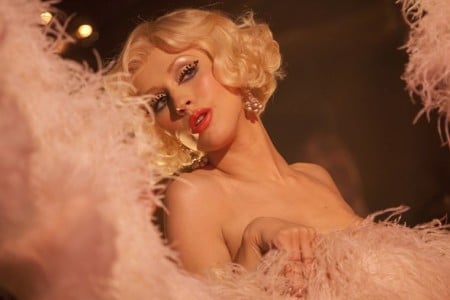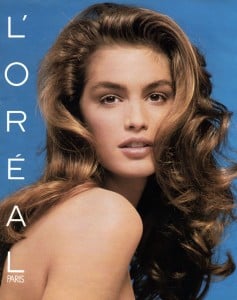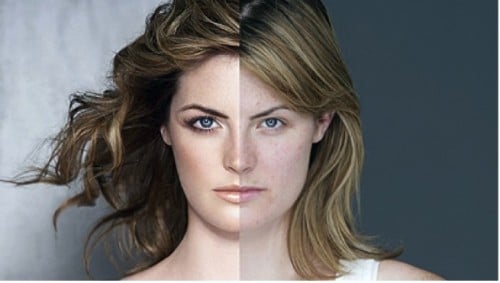On The Power of Images: Part 3/3
March 4, 2016

If you’re just joining us now, take a look at parts one and two of a short series based on semi-academic writing by one of our writer’s, in which she discusses the representation of women in classic Hollywood cinema and 20th century advertising.
Part Three
Women watch themselves, (watch others, watch themselves watching others) and watch others watching them. A subject’s environment determines his or her: “inner judge”, the premise of this inner judge is formed during the subject childhood by his or her education. It is therefore influenced by our environment, culture, society and epoch. The cisgender female’s inner judge (or for Freud: super-ego) seems to be determined to dictate a need of protection from the violent urges of the heterosexual male (“look over your shoulders!”, “pull down your skirt!”, “walk home with a friend after dark” etc.) a patterned awareness that creates a habit of fear.
Preventing a violent attack or murder seems to become part of a woman’s daily routine. Rape reports followed by the question “but why didn’t you….?” create a tropism that echoes in woman’s ears and lifestyles (texting your friend to say you are home safe, putting earphones on to avoid cat callers etc.). This forms imbalances, such as in the seduction field: men tend to take the initiative and instigate contact while woman tend to react defensively. However, this is also the case with general everyday interactions: men tends to be more confident, daring about their statements whilst woman are more likely to be hesitant, unsure, not wanting to disturb or be too aggressive.

Lorànt Deutsch, Anna Mouglalis
But the fact that women are often the victims of unsolicited attention that can be forceful, does not mean woman do not enjoy being looked at and don’t want to be desired, admired, or even envied. Jean Kilbourne discusses the essence (Sartre’s definition ) that contemporary publicity emits on femininity and the female figure, the beauty standards, and created images of the ideal woman which promote self-hatred and self-objectification. Contemporary publicity teaches women and girls that their sexualized behaviour and appearance are often rewarded by society. They are encouraged to objectify, stereotype themselves and to declare it as empowering choice. Yet…
‘When the culture only offers one way for women to be sexy it can hardly be an authentic choice to choose it.’ (Kilbourne)
Do women have to provoke the lust and approval of the heterosexual male watcher to feel desirable or feminine? This is what this what mainstream advertising suggests, but should we believe it? Living in the twentieth century (especially in the city) visual information, which depicts patriarchy in advertising images, is force-fed. Citizens see hundreds of commercial messages a day, which cannot be un-seen, (newspaper commercials, radio commercials, television commercials, billboards etc).

Jean Kilbourne’s speech denounces advertising and the ways it tells us what to desire, teaching us that the most important thing is how we look. Women and girls learn to spend time, money and vigour to follow advertising’s given image of the ‘ideal women’ and feel ashamed when they fail. But these standards of beauty and sexiness are impossible to fulfil: model Cindy Crawford once said: ‘I wish I looked like Cindy Crawford’. This promotes low self-esteem but also a sense of competition and envy between heterosexual, cisgender members of the same sex: fearing that someone else might be more attractive and therefore more likely the gain amorous attention.
This rivalry pushes us away from solidarity and the fight for gender equality. Self-hatred encourages the consummation of certain products (such as make up, weight loss pills etc.) and is therefore beneficial for industries all over the world. Advertisements teach us that to be sexy we must be young, extremely thin, white (or light skinned), and have a naturally looking airbrushed hair-free skin. Publicity advocates the idea that sex is reserved for people who fit these requirements. This is something that makes woman and men feel less desirable and insecure. The idealistic representation of beauty in publicity, that doesn’t reflect ninety-five per cent of American females, actively encourages eating disorders.

Therefore, we have seen how the formal preoccupations of Hollywood are entertainment and the reflection of an enhanced world, which encourages society to reinforce their accepted values. Hollywood uses the socio-political context it is moulded in, forming stories for the spectator to recognize himself in and avoid any challenge to the gender stereotypes. Publicity extends this notion further, in the pursuit of monetary gain. Men and boys are incited to supress their sensitivity or emotions and express their physical, violent or sexual urges, while women are incited to conform to utopian beauty standards by buying products to enhance their appearance or opinion of themselves. This therefore contributes to furthering the negative view women have of themselves and can lead to rivalry, low self esteem, or even dangerous eating disorders. I believe it is important for the given visual images to promote human rights and social equality, not contribute to gender inequality or heteronormativity.
End of Part Three
Filed under: Film, TV & Tech
Tagged with: cinema, film, gaze, gender, Hollywood, male, normativity, politics, sexuality, stereotypes, women



Comments